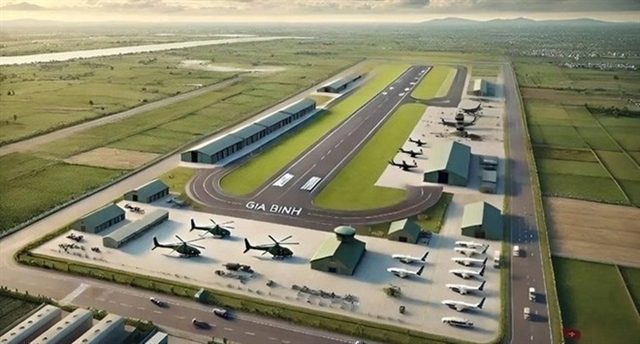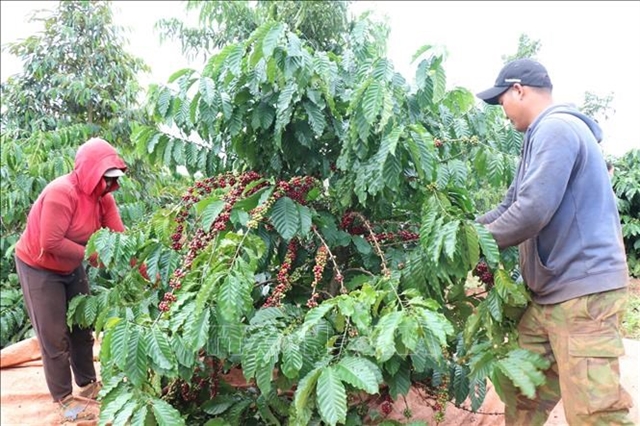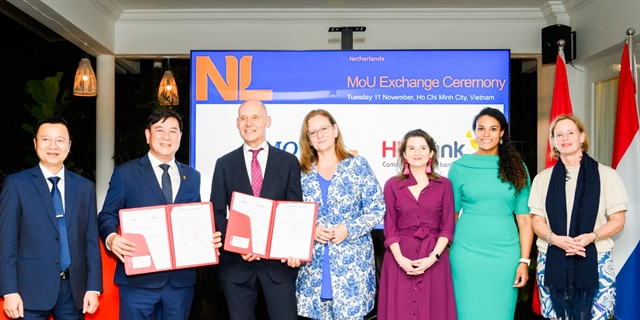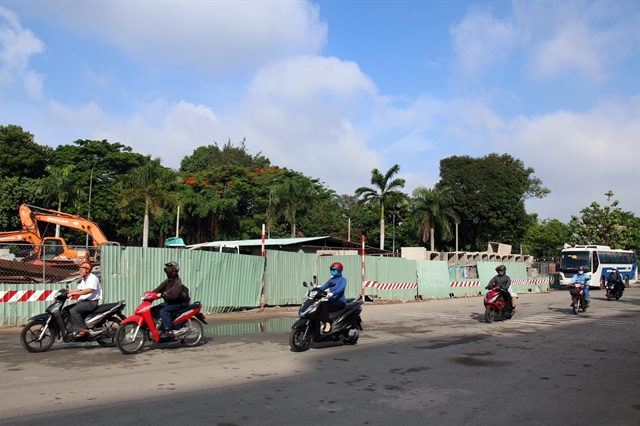 Society
Society


|
| Farmers harvest coffee in Lâm Đồng Province. – VNA/VNS Photo |
LÂM ĐỒNG — Lâm Đồng Province is accelerating replanting old coffee trees, aiming for 80–90 per cent of its newly planted coffee areas to use certified varieties by 2030.
The province Department of Agriculture and Environment has approved a plan for replanting and grafting old coffee trees for the 2026–30 period, targeting to replant 14,000ha of Robusta coffee and 260ha of Arabica coffee, and graft 10,700ha of Robusta coffee during the period.
The province aims for 70 per cent of its coffee areas to have growing codes, and 100 per cent to meet the EU Deforestation Regulation (EUDR).
By 2030, the province aims to achieve an average coffee yield of 3.5–4 tonnes per hectare, and 50 per cent of coffee output to be certified standards such as Vietnamese and global good agricultural practices (VietGAP and GlobalGAP), Common Code for the Coffee Community (4C) and Rainforest Alliance (RA).
Located in the South-Central Coastal–Central Highlands region, Lâm Đồng now has a total of 323,241ha of coffee, producing about one million tonnes of coffee beans, the largest production scale in the country.
The province has formed 65 production and consumption linkages involving 29,420 farming households on 55,468ha.
It has 117 co-operatives and 32 co-operative groups in the coffee sector, which are linked with 34 enterprises and about 28,949 farmers.
In the 2024 coffee crop, Lâm Đồng exported about 158,253 tonnes of green coffee beans, earning US$479 million from key markets such as Switzerland, Italy, Japan, Spain and Germany.
The province’s coffee area is expected to exceed 323,000ha by the end of this year, with output surpassing one million tonnes, the highest ever, according to the province Department of Agriculture and Environment.
New varieties such as TR4, TR9, TRS1 and Xanh Lùn (TS5) have been widely adopted, improving yield, bean quality and pest resistance.
Over 70 per cent of replanted areas already use certified varieties approved by the Ministry of Agriculture and Environment.
Along with variety renewal, farmers are increasingly applying advanced farming techniques.
Nearly 38,000ha of coffee are now irrigated using water-saving systems such as sprinklers, drip and mist irrigation.
Six high-tech coffee production zones have been recognised, covering more than 2,200ha and involving over 1,400 farmers.
These models help reduce input costs and enhance product value.
The province’s preferential loans for replanting coffee have exceeded VNĐ650 billion ($24.7 million), giving farmers more resources to invest and expand their cultivation areas.
Currently, nearly 119,000ha of coffee in the province are certified under sustainable standards such as 4C, Rainforest Alliance, UTZ, VietGAP and organic production.
Despite positive results, the province’s coffee replanting programme in 2021–25 faced challenges.
The COVID-19 pandemic and rising input costs drove up replanting expenses.
At the same time, coffee bean prices have surged to record highs, nearly VNĐ120,000 ($4.6) per kilogramme, discouraging farmers from replanting old trees as many farmers prefer to maintain low-yield old coffee orchards to secure short-term income.
Some localities still struggle with seed management, technical guidance and loan procedures for replanting.
The province will promote high-tech applications, provide preferential loans, expand public–private partnerships and develop specialised replanting co-operatives.
It encourages enterprises to invest in deep processing, develop specialty and organic coffee, and build the province’s coffee brand linked with traceability and geographical indications. — VNS




